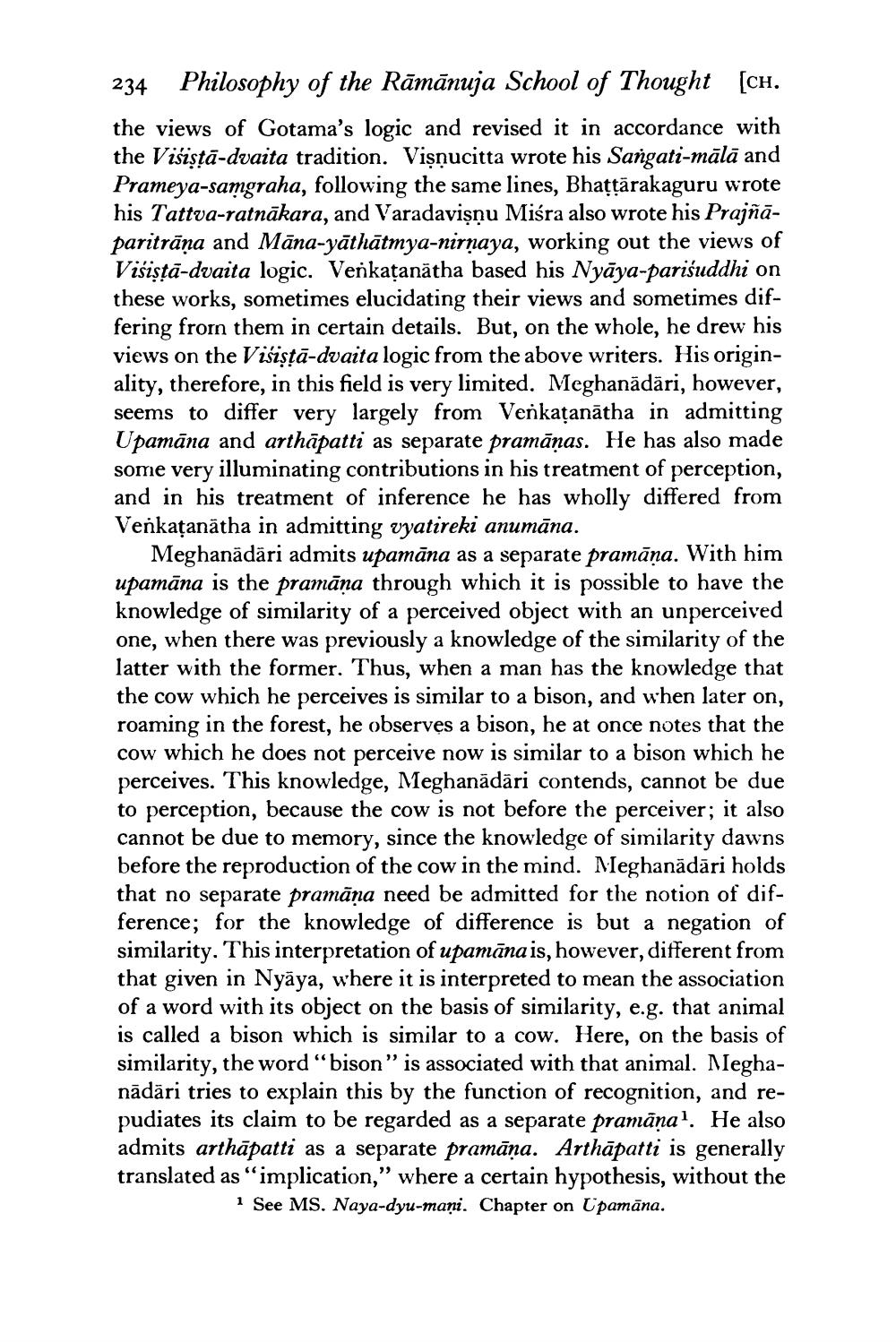________________
234 Philosophy of the Rāmānuja School of Thought [ch. the views of Gotama's logic and revised it in accordance with the Višiştā-dvaita tradition. Vişnucitta wrote his Sangati-mālā and Prameya-samgraha, following the same lines, Bhattārakaguru wrote his Tattva-ratnākara, and Varadavişnu Misra also wrote his Prajñāparitrāņa and Māna-yāthātmya-nirnaya, working out the views of Višistā-dvaita logic. Venkațanātha based his Nyāya-parisuddhi on these works, sometimes elucidating their views and sometimes differing from them in certain details. But, on the whole, he drew his views on the Višstā-dvaita logic from the above writers. His originality, therefore, in this field is very limited. Meghanādāri, however, seems to differ very largely from Verkațanātha in admitting Upamāna and arthāpatti as separate pramāṇas. He has also made some very illuminating contributions in his treatment of perception, and in his treatment of inference he has wholly differed from Venkațanātha in admitting vyatireki anumāna.
Meghanādāri admits upamāna as a separate pramāņa. With him upamāna is the pramāna through which it is possible to have the knowledge of similarity of a perceived object with an unperceived one, when there was previously a knowledge of the similarity of the latter with the former. Thus, when a man has the knowledge that the cow which he perceives is similar to a bison, and when later on, roaming in the forest, he observes a bison, he at once notes that the cow which he does not perceive now is similar to a bison which he perceives. This knowledge, Meghanādāri contends, cannot be due to perception, because the cow is not before the perceiver; it also cannot be due to memory, since the knowledge of similarity dawns before the reproduction of the cow in the mind. Meghanādāri holds that no separate pramāna need be admitted for the notion of difference; for the knowledge of difference is but a negation of similarity. This interpretation of upamāna is, however, different from that given in Nyāya, where it is interpreted to mean the association of a word with its object on the basis of similarity, e.g. that animal is called a bison which is similar to a cow. Here, on the basis of similarity, the word “bison" is associated with that animal. Meghanādāri tries to explain this by the function of recognition, and repudiates its claim to be regarded as a separate pramānal. He also admits arthāpatti as a separate pramāna. Arthāpatti is generally translated as "implication," where a certain hypothesis, without the
1 See MS. Naya-dyu-maņi. Chapter on Upamāna.




